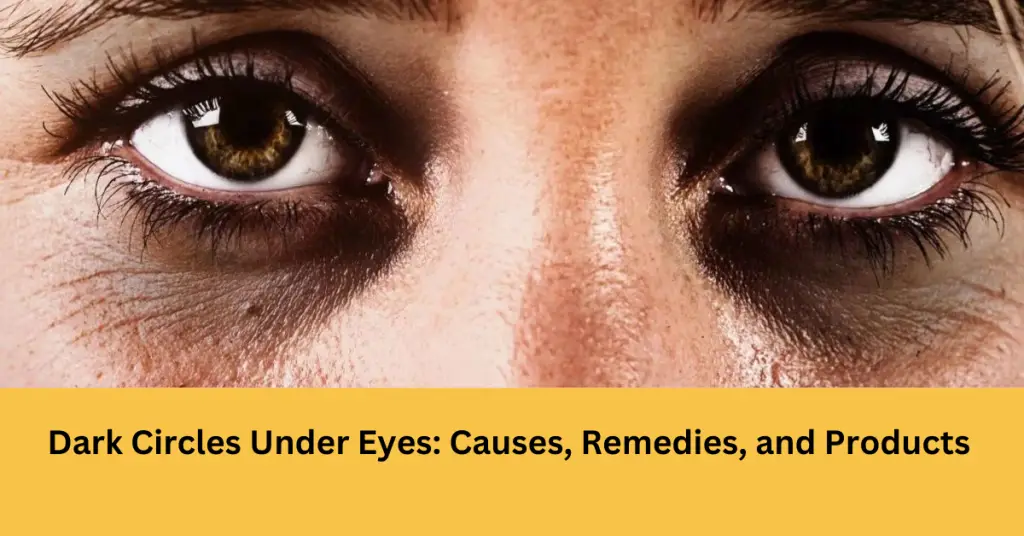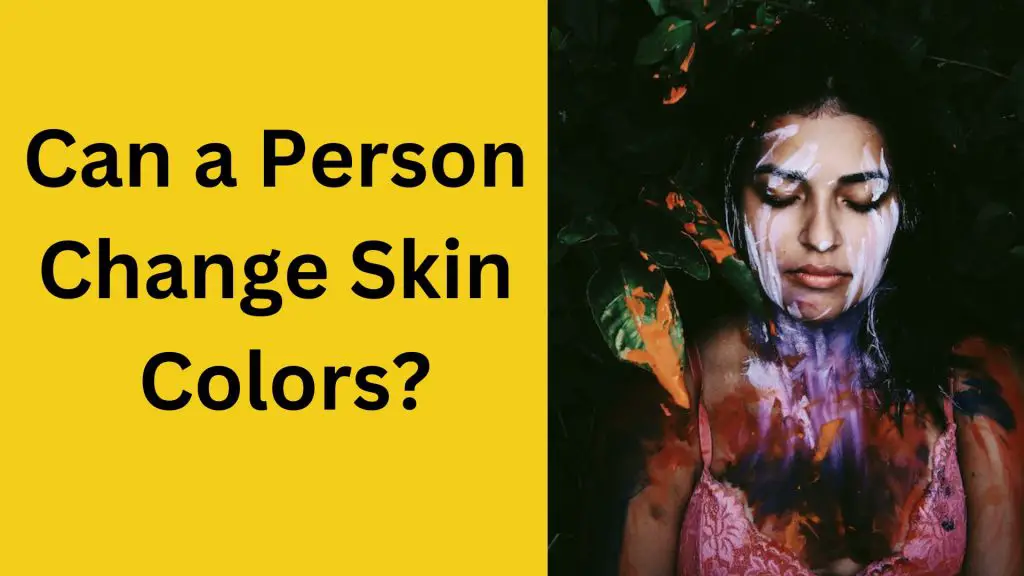What Causes Dark Circles Under Eyes?
There are many factors that can contribute to the appearance of dark circles under eyes, such as:
Age
As you get older, your skin becomes thinner and loses elasticity, making the blood vessels and dark tissues under your eyes more visible. You may also develop hollows or bags under your eyes, which can create shadows that look like dark circles.
Click and learn: How to Choose the Best Anti-Aging Skincare Products.
Fatigue
Lack of sleep or oversleeping can make your skin pale and dull, which can accentuate the dark circles under your eyes. You may also experience fluid retention or puffiness under your eyes, which can worsen the problem.
Allergies
Allergic reactions can cause your eyes to itch, swell, and become red, which can irritate the skin and blood vessels around your eyes. You may also rub or scratch your eyes, which can damage the skin and cause inflammation and pigmentation.
Sun exposure
Too much sun exposure(Ultra violet rays) can trigger the production of melanin, the pigment that gives your skin color. Excess melanin around your eyes can darken the skin and make it look uneven.
Smoking and alcohol
Smoking and drinking alcohol can cause dehydration, premature aging, and poor circulation, which can affect the health and appearance of your skin, especially around your eyes.
Anemia
Anemia is a condition where you have low levels of iron in your blood, which is essential for carrying oxygen to your cells. Low oxygen levels can make your skin look pale and bluish, which can highlight the dark circles under your eyes.
Poor diet
Eating unhealthy foods or lacking certain nutrients can affect your skin quality and complexion. For example, vitamin K, vitamin C, vitamin E, and antioxidants are important for maintaining healthy and bright skin.
Genetics
Dark circles under eyes can also run in families, especially if you have a darker skin tone or thin skin around your eyes. You may inherit the tendency to have more melanin, blood vessels, or fat deposits under your eyes, which can make them look darker.
Types of Dark Circles
Dark circles are a prevalent cosmetic concern, presenting in various forms, each associated with specific causes and remedies. These include;
Pigmented Dark Circles
These dark circles stem from an overproduction of melanin, often with a hereditary influence. Sun exposure can intensify them, causing the skin around the eyes to appear darker.
Vascular Dark Circles
Characterized by bluish or purple discolorations, vascular dark circles are linked to blood vessel issues. Inadequate sleep, aging, and poor blood circulation contribute to their prominence.
Structural Dark Circles
Structural dark circles are identified by the thinning or hollowing of the skin around the eyes. This type exposes underlying blood vessels and tissues, creating a shadowed appearance.
Lifestyle-Related Dark Circles
Dark circles resulting from lifestyle choices, such as high stress levels, dehydration, and an imbalanced diet, can develop. Modifying these factors through lifestyle changes may help diminish the severity of these circles.
Recognizing the specific type of dark circles is crucial for implementing effective solutions. Tailored treatments, such as using specialized creams or adjusting daily habits, can aid in reducing and improving dark circles based on their underlying causes.
What are the Best Remedies for Dark Circles Under Eyes?
There are many ways to treat dark circles under eyes, depending on the cause and severity of your condition. Some of the most effective and popular remedies are:
Cold compress
Applying a cold compress to your eyes can help reduce swelling, inflammation, and blood vessel dilation, which can improve the appearance of dark circles. You can use ice cubes, cold spoons, cucumber slices, tea bags, or gel eye masks for this purpose. Just make sure to wrap them in a cloth or tissue before applying them to your eyes, and avoid direct contact with your eyeballs.
Eye cream
Using a good eye cream can help moisturize, nourish, and protect the delicate skin around your eyes. Look for eye creams that contain ingredients that can brighten, firm, and smooth the skin, such as vitamin C, vitamin K, caffeine, retinol, hyaluronic acid, peptides, or niacinamide. You can also use eye creams that have light-reflecting or color-correcting properties, such as pink, peach, or yellow tones, to counteract the darkness under your eyes.
Sunscreen
Applying sunscreen to your face and especially around your eyes can help prevent sun damage and hyperpigmentation, which can worsen the appearance of dark circles. Choose a sunscreen that has at least SPF 30 and broad-spectrum protection, and reapply it every two hours or as needed. You can also wear sunglasses, hats, or visors to shield your eyes from the sun.
Makeup
Using makeup can help conceal and camouflage the dark circles under your eyes, making them less noticeable. You can use a concealer that matches your skin tone or is slightly lighter, and apply it in a triangular shape under your eyes, blending it well with your fingers, a sponge, or a brush. You can also use a highlighter, a brightening powder, or a setting spray to add some glow and radiance to your eyes.
Lifestyle changes
Making some changes to your lifestyle can help improve your overall health and well-being, as well as the appearance of your skin and eyes. Some of the things you can do are:
- Get enough sleep: Aim for at least seven to eight hours of quality sleep every night, and avoid staying up late or sleeping too much. Try to sleep on your back or with your head elevated, to prevent fluid accumulation or sagging under your eyes.
- Drink plenty of water: Stay hydrated by drinking at least eight glasses of water a day, and avoid drinks that can dehydrate you, such as alcohol, coffee, or soda. Water can help flush out toxins, improve circulation, and plump up your skin.
- Eat a balanced diet: Eat a variety of foods that are rich in vitamins, minerals, antioxidants, and omega-3 fatty acids, such as fruits, vegetables, nuts, seeds, fish, and lean meats. These foods can help nourish your skin, boost your immunity, and fight inflammation and oxidative stress.
- Quit smoking: Smoking can damage your skin, accelerate aging, and impair blood flow, which can affect the appearance of your eyes. Quitting smoking can help improve your skin health, as well as your overall health and longevity.
- Exercise regularly: Exercising can help improve your mood, energy, and metabolism, as well as your blood circulation and oxygen delivery to your cells. This can help enhance your skin tone and texture, and reduce the appearance of dark circles. Aim for at least 30 minutes of moderate to vigorous physical activity, three to five times a week.
What are the Best Products for Dark Circles Under Eyes?
If you are looking for some products that can help you get rid of dark circles under eyes, here are some of the best ones that you can try:
RoC’s Retinol Correxion Line Smoothing Under Eye Cream
Contains a blend of retinol, hyaluronic acid, and glycerin designed to address issues such as dark circles, fine lines, and wrinkles. It is important to consider individual skin sensitivity, as the presence of retinol may cause irritation, and its use heightens susceptibility to sunburn.
La Roche-Posay Redermic R Eyes Retinol Eye Cream
It contains niacinamide, caffeine, and thermal spring water to reduce puffiness while boosting hydration.
Drunk Elephant C-Tango Multivitamin Eye Cream
The Ordinary Caffeine Solution 5% + EGCG
This is a lightweight and affordable eye serum that can help reduce puffiness and dark circles under your eyes. It contains caffeine, which can help constrict the blood vessels and reduce fluid retention under your eyes. It also contains epigallocatechin gallatyl glucoside (EGCG), which is a potent antioxidant derived from green tea leaves, which can help protect the skin from free radical damage and inflammation. You can apply it once or twice a day, morning and night, before your moisturizer or eye cream.
Click to explore more products for dark circles under eyes.
Medical treatment for Dark Circles under eyes
For a more permanent option, some medical treatments are available to help reduce the appearance of dark circles
Dermal Fillers
An effective approach for the reduction of dark circles involves the use of dermal fillers. In this technique, a dermatologist employs gel-like substances to address dark circles resulting from the loss of facial and under-eye volume.
Here are 11 Things you need to know before going for dermal fillers.
Laser Treatment
An alternative option for treating dark circles is laser therapy. Widely recognized for its effectiveness, this method focuses on the inner layers of the skin to enhance skin texture and tone.
Click to see our article on “Face Laser Treatment Price: A Comprehensive Guide”
Chemical Peeling
To address dark circles, chemical peeling is a procedure where various acids are applied to break down the top layers of the skin.
Platelet Rich Plasma (PRP)
Platelet Rich Plasma (PRP) treatment involves utilizing your blood for the procedure. After collecting the blood, the PRP is filtered and reintroduced into your body. Multiple sessions are typically required for this treatment to yield optimal results.
You may also be interested in: PRP Hair Treatment Cost.
Conclusion
Dark circles under eyes are a common beauty problem that can affect anyone, regardless of age, gender, or skin tone. Dark circles result from aging, fatigue, allergies, sun exposure, smoking, alcohol, anemia, poor diet, or genetics. Treat with cold compresses, eye creams, sunscreen, makeup, and lifestyle changes. Consider products like Beauty Bloom Box Eye Serum, The Ordinary Caffeine Solution 5% + EGCG, or Maybelline Instant Age Rewind Eraser Dark Circles Treatment Concealer. With these tips and products, you can say goodbye to dark circles and hello to bright and beautiful eyes.


